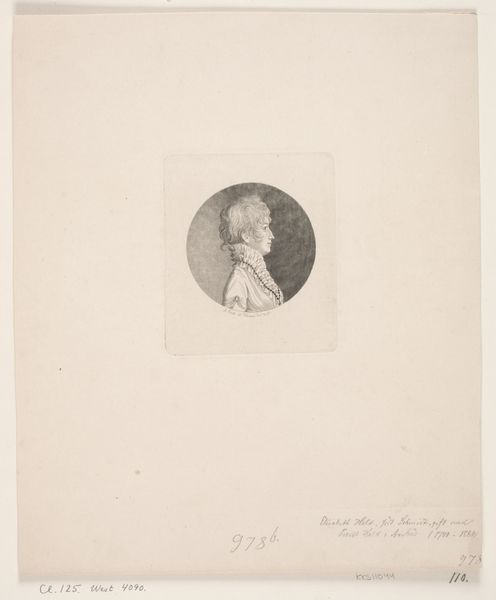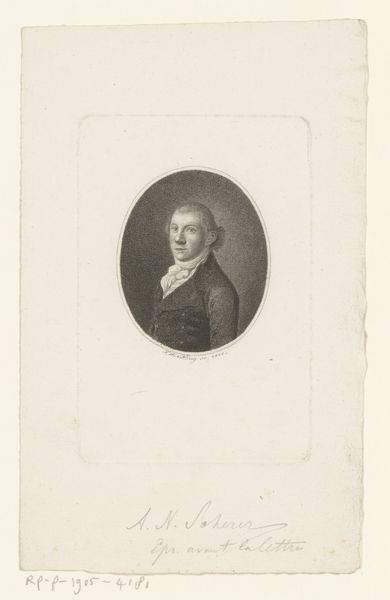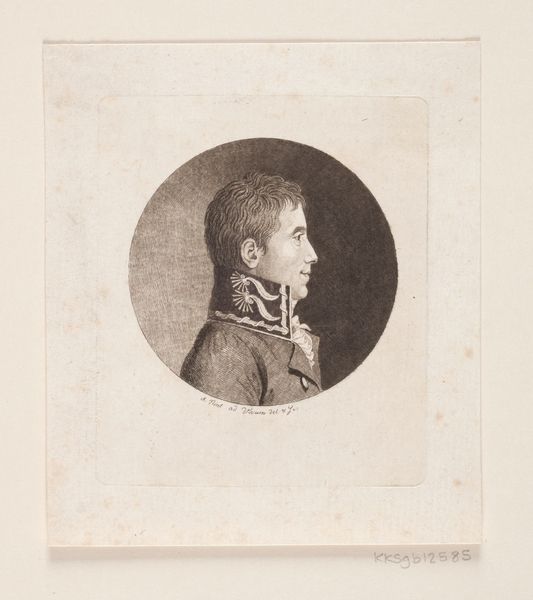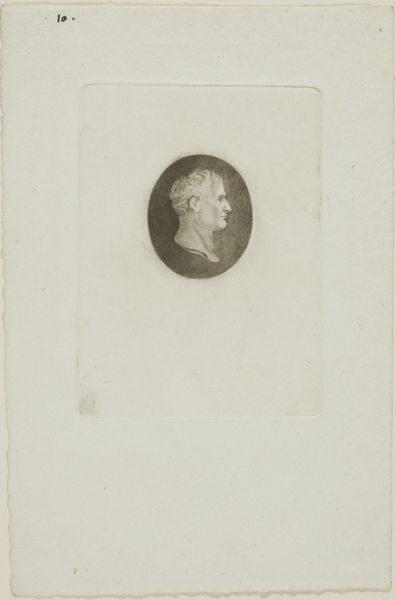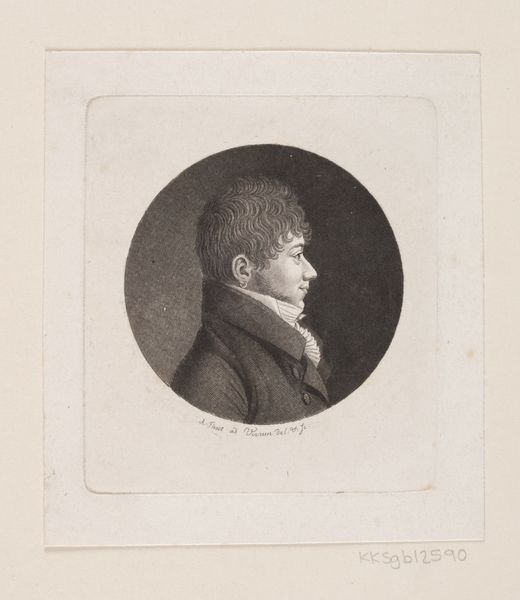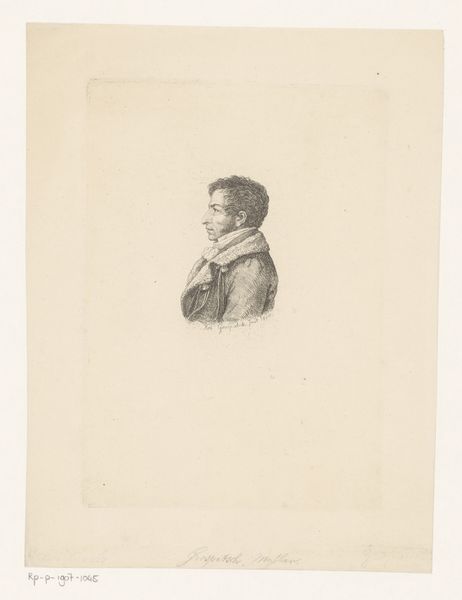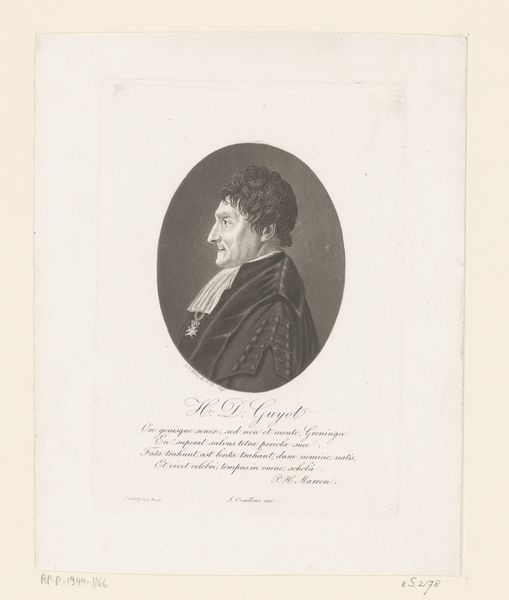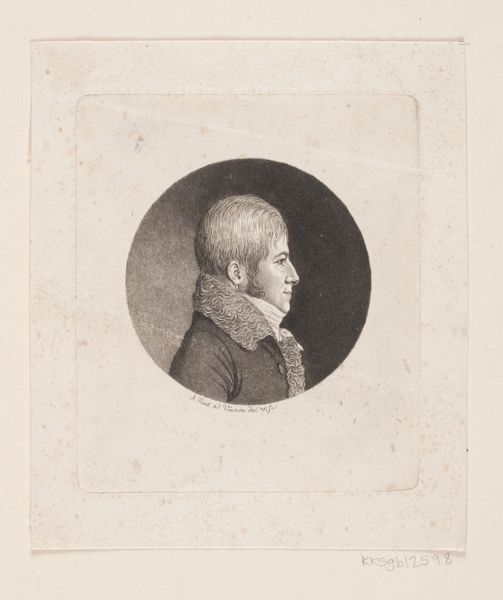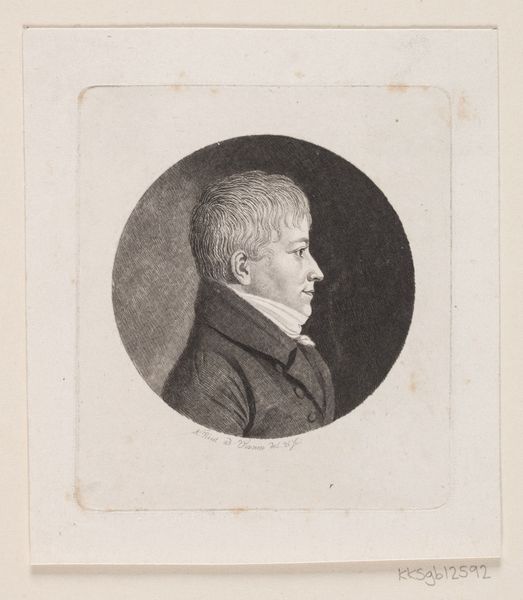
watercolor
#
portrait
#
watercolor
#
romanticism
#
watercolor
Dimensions: height 232 mm, width 153 mm
Copyright: Rijks Museum: Open Domain
Editor: This is a watercolor portrait of Johan Carl Krauss by Friedrich Christoph Dietrich, created sometime between 1789 and 1826. It feels very formal, almost severe. What stands out to you when you look at it? Curator: Immediately, I'm drawn to the sitter's profile. Consider the time in which this was created, during a period of immense social and political upheaval following the French Revolution. What does it signify for Dietrich to present Krauss, a doctor, in such a classical, almost Roman way? This isn’t just a likeness; it's a statement. What kind of a man was Krauss and what values was Dietrich trying to highlight? Editor: So, it’s less about capturing an exact image and more about conveying an idea? The profile, it makes him seem very stoic. Curator: Exactly! Think about the Enlightenment ideals circulating at the time: reason, order, and civic duty. Doctors, like Krauss, were increasingly seen as figures of public service and intellectual authority. Dietrich emphasizes this by rendering him with sharp, clean lines, placing him against a dark background which throws his features into sharper relief. It evokes a sense of moral strength. How does this impact your viewing of it now? Editor: I see it differently now. It’s less severe and more about projecting a certain kind of... power, almost. But also responsibility. Was watercolor a common medium for portraits at that time? Curator: Watercolor allowed for a certain level of intimacy and accessibility, particularly for the burgeoning middle class. It’s less grand than an oil painting, but perhaps more direct. So, the choice of medium is interesting too. It speaks to the evolving social dynamics of the late 18th and early 19th centuries. Editor: This was a really insightful reading of this piece. It gives me much to think about beyond just aesthetics. Curator: It’s a constant negotiation, between the artistic representation, historical contexts, and the individuals portrayed. It seems simple, yet contains such depth.
Comments
No comments
Be the first to comment and join the conversation on the ultimate creative platform.
